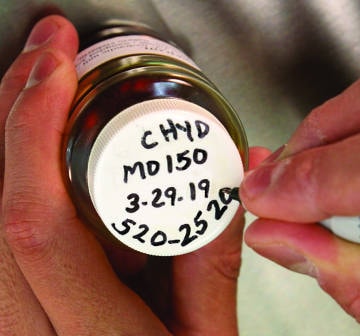Lube-Tips
 Make Oil Sampling Easier
Make Oil Sampling Easier
When labeling oil sample bottles prior to taking samples, consider identifying the bottle caps as well as the labels. A felt-tip pen works well. This will save a lot of time as you will not have to pick up each bottle to tell which one you need next.
 Purge Grease Fittings Before Installing
Purge Grease Fittings Before Installing
Purge all new grease fittings with a grease gun before they are installed on your machine. Use the same type of grease that will be used later for regreasing. This practice will remove any dust, burrs or other debris that has collected inside the grease fitting. It will also reduce the risk of cross- contamination between different grease products.
Use Self-Closing Valves
Consider using self-closing valves as the dispensing valves on oil drums that are stored in a horizontal position. A self- closing valve will eliminate the possibility of the dispensing valve being left partially open and draining the entire contents of the drum on the ground or containment pad.
 Sight Glass Reading May Be Deceptive
Sight Glass Reading May Be Deceptive
Sight glass tubes can get clogged at the intake and hold lubricant in the tube. Even when the oil or grease level in the equipment drops low, the sight glass may continue to indicate the level is adequate. Use a wire or pipe cleaner brush at each servicing to make sure the sight glass tube is clear from intake to glass. This applies to oil sight glasses that can get clogged from contaminants as well as grease applicators that can get dry grease bridges.
